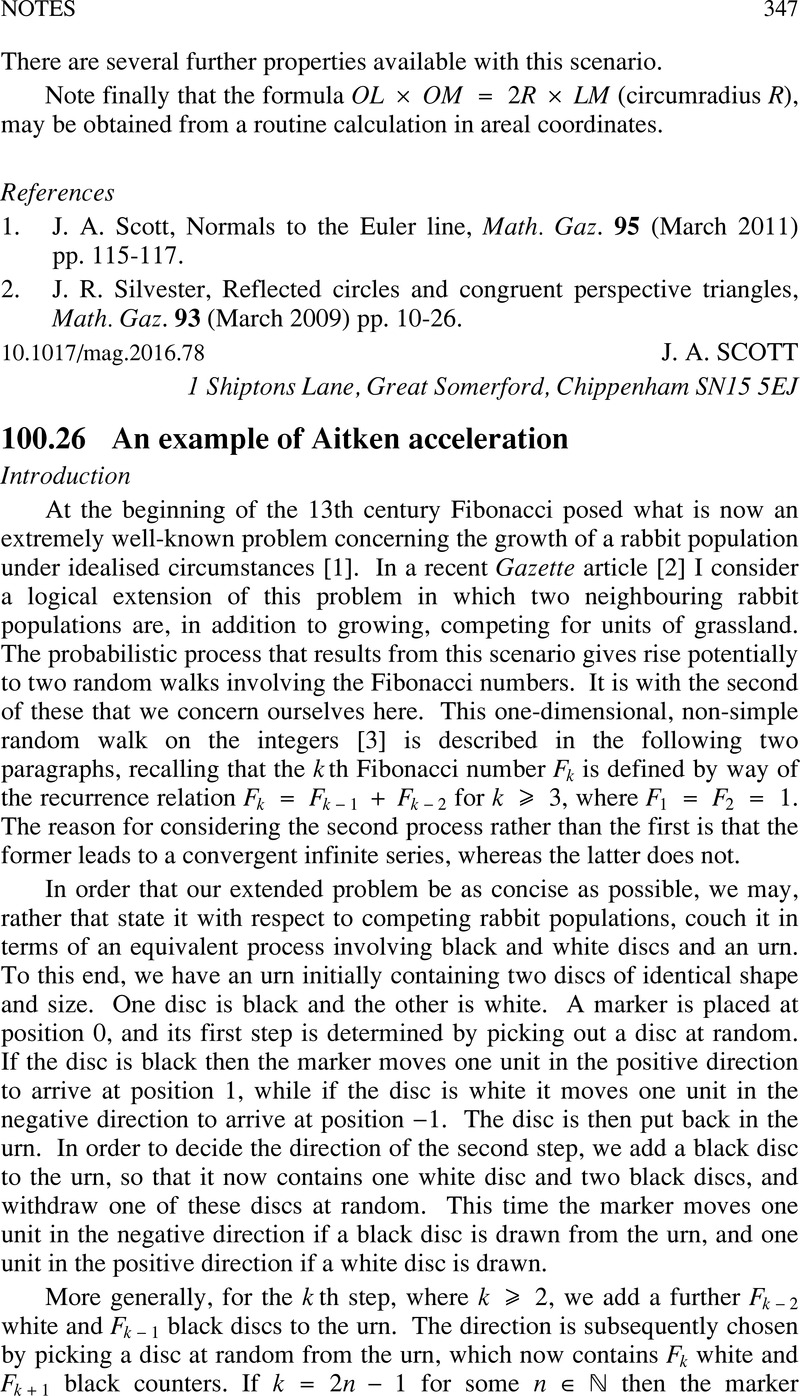No CrossRef data available.
Article contents
100.26 An example of Aitken acceleration
Published online by Cambridge University Press: 14 June 2016
Abstract
An abstract is not available for this content so a preview has been provided. Please use the Get access link above for information on how to access this content.

Information
- Type
- Notes
- Information
- Copyright
- Copyright © Mathematical Association 2016
References
1.Knott, R., Fibonacci numbers and nature, (2015). http://www.maths.surrey.ac.uk/hosted-sites/R.Knott/Fibonacci/fibnat.htmlGoogle Scholar
2.Griffiths, M., Random walks arising from a Fibonacci's-rabbits scenario, Math. Gaz. 99 (March 2015) pp. 60–67.CrossRefGoogle Scholar
3.Grimmett, G. and Stirzaker, D., Probability and random processes (3rd edn.), Oxford University Press (2001).CrossRefGoogle Scholar
5.Knott, R., Fibonacci and phi formulae, (2015). http://www.maths.surrey.ac.uk/hosted-sites/R.Knott/Fibonacci/fibFormulae.htmlGoogle Scholar
7.Bradley, D., Hypergeometric functions related to series acceleration formulas, in Tapas in Experimental Mathematics, Proceedings of the AMS Special Session on Experimental Mathematics (edited by Amdeberhan, T. and Moll, V.), Contemporary Mathematics 457, American Mathematical Society (2008).Google Scholar

